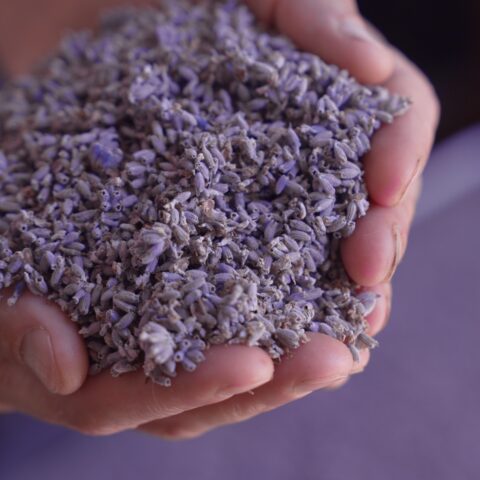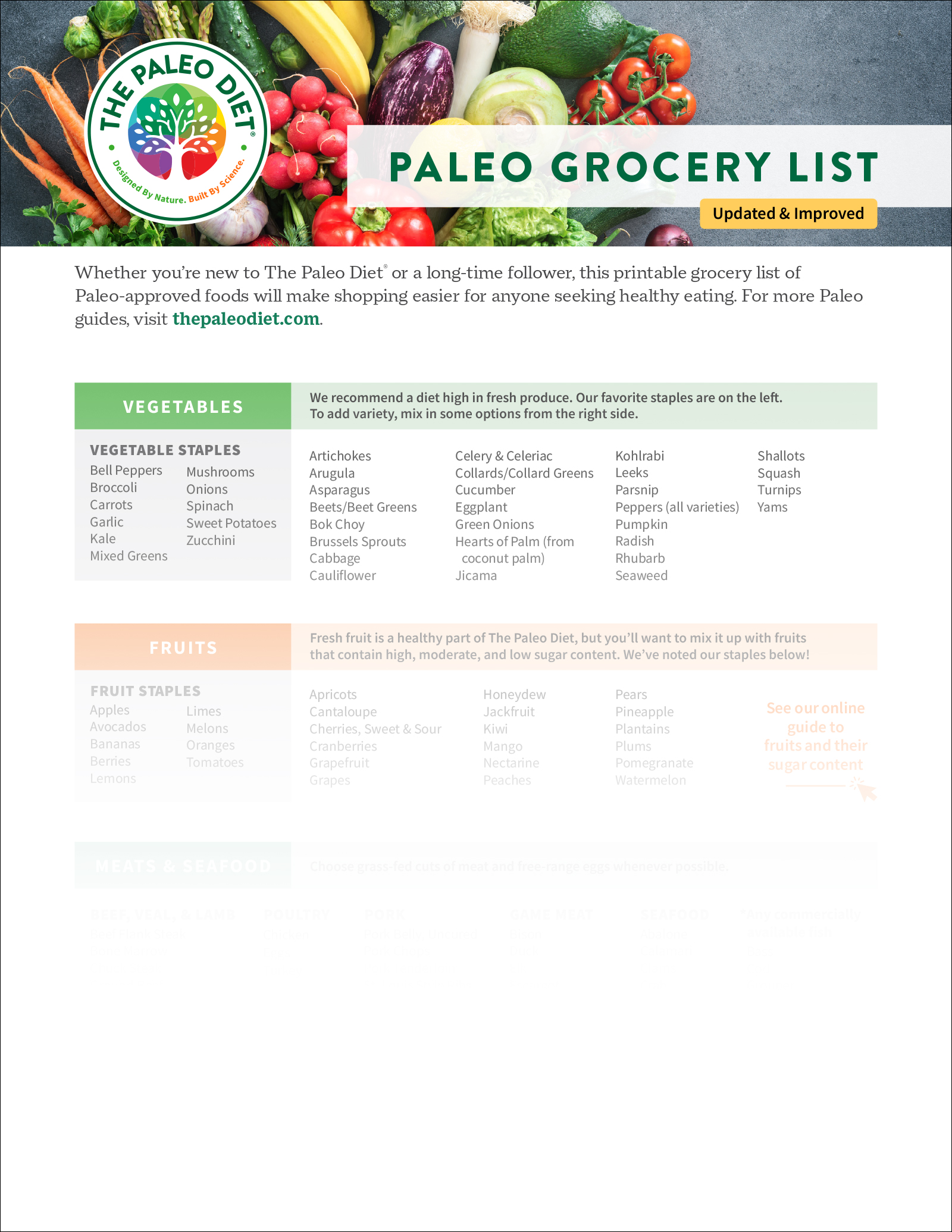Healthy on the Go: Tips for Eating at Restaurants & Packing Road Trip Snacks

The Paleo Diet® is particularly effective when applied to home cooking: prioritizing fresh-made meals with whole produce and sustainably sourced animal proteins. But we live our lives outside of the kitchen as well: celebrating milestones by eating at restaurants; traveling for work, play, or competition; or even just grabbing a quick bite out because we’re too busy to cook something.
We have numerous occasions where we want or need to eat outside of our home, but these situations don’t need to derail our commitments to a healthy lifestyle. With a bit of intention and willingness to adapt, you can make choices that feel good in your body and align with your goals.
Healthy Options for Eating at Restaurants
Many restaurants cater to vegetarians and increasingly more offer menus for those with allergies and intolerances, such as dairy free or gluten free. While Paleo-specific options aren’t commonly found when eating at restaurants, many places provide dishes that can be easily adapted to fit your needs. The key is to focus on whole ingredients and clear preparation methods.
For breakfast, a solid strategy is to order an egg dish along with a bowl of fresh fruit. Poached, boiled, or soft-scrambled eggs are good options to choose from as they are unlikely to be made with commercial seed oils, which can release potentially harmful oxidized cholesterol when used in high-heat cooking. Restaurants that use canola or soybean oil for omelets and fried eggs often won’t disclose it unless asked.
Eating at restaurants for lunch and dinner is typically easier to navigate. Start by identifying a protein-forward entrée such as grilled fish, seared steak, or roasted chicken. From there, swap in simple sides like seasonal vegetables or a salad. Most chefs are familiar with dietary requests and will accommodate substitutions when framed clearly and politely.
If you don’t see an entrée you like, try ordering several sides to make up your meal. For example, request a side of animal protein, if possible. Order a salad (hold the croutons) and request steamed veggies instead of bread or potatoes. For the salad dressing, most restaurants should have a simple olive oil vinaigrette. Instead of a sugar- or grain-laden treat, ask for fresh fruit for dessert.
Strive for simplicity: Request sauces or dressings on the side and skip heavily sweetened glazes if possible. Depending on the type of cuisine you’re enjoying, there are easy requests or modifications you can make to build your plate—whether it’s Taco Tuesday, sushi night, or date night at an Italian restaurant.
For those dining with kids, it helps to know ahead of time what kind of fare the restaurant offers so you can provide several options for picky eaters. Research the menu beforehand if possible and remember to guide little ones with gentle suggestions and curiosity to give them agency and confidence in their food choices.
RELATED: Keeping Your Kids on Track While on Summer Vacation
Healthy Travel Snacks
Travel days present their own challenges, especially when food access is limited by location, timing, or convenience. Packing food in advance is one of the most effective strategies for reducing stress and decision fatigue during long drives.
For road trip snacks, pack a cooler with fruits, veggies, salads, and leftover meats and seafood. Cooking two to three times more protein than you need at dinner is one simple way to ensure there are leftovers for breakfast and lunch the next day.
For example, barbecue a large cut of steak for dinner one evening, refrigerate the leftovers, and the next day slice the beef into a mixed salad and toss with flaxseed oil and lemon juice. Voila—an instant Paleo picnic lunch!
RELATED: How to Stay Paleo When Traveling by Plane
If you don’t have a cooler, many grocery stores can serve as an alternative to fast food. Look for meats like cooked shrimp or rotisserie chicken in the deli section, then head to produce and grab some fresh fruit, avocados, and crisp veggies to go with it. Pre-washed salad kits or pre-cut fruit are not always ideal, but can help bridge the gap when fresh prep isn’t an easy option. Bring reusable utensils to reduce waste from single-use plastic sets, and grab extra napkins from gas stations or have paper towels packed to clean up any messes.
See our suggestions for healthy road-trip snacks below!
- Transform whole fruit into a more compact and snackable form with fruit leather.
- Pickle your favorite fruits and vegetables with a salt-free brine and choose your own bouquet of spices.
- Make homemade jerky with an air fryer, oven, or dehydrator. Don’t be limited by the traditional beef variety—try chicken, pork, or even venison.
- Boost bite-size energy balls with Paleo protein powders, nuts, or cacao nibs to stay focused and alert.
- You can’t go wrong with trail mix, Paleo granola, or spiced nuts or seeds for a pick-me-up snack.
- Baked chips made with apples, kale, or beets provide a satisfying crunch.
- Paleo Coconut Macaroons use only three ingredients and contain no added sugar.
- Muffins aren’t TRUEPALEO™ because of their use of nut flours, but make for a great occasional road-trip treat.
- Spruce up plain chopped fruit by adding a few herbs and spices, such as in this Spicy Watermelon Salad.
- Latkes can use hearty vegetables like sweet potato or butternut squash and make for a filling snack.
- Non-leafy salads like egg salad, chicken salad, or sweet potato salad are easy to eat straight from the container.
It’s Okay to Be Flexible
Flexibility is important when traveling or eating at restaurants as sometimes options can be limited. While it’s ideal to plan the best you can—especially if you’re on a road trip—having the occasional non-Paleo meal not only won’t hurt your health, but it also may be the only thing available at times. In fact, building space into your plan for flexible meals can reduce stress and reinforce consistency over time.
Long-term success comes from patterns, not individual meals. If the foundation of your diet (roughly 85% of meals) includes whole foods like meat, seafood, fruits, vegetables, and healthy fats, then the occasional flexible choice is unlikely to interfere with your health or performance.
Moments of flexibility—especially when chosen intentionally—have been shown to support psychological well-being and improve dietary adherence in the long run. They don’t compromise your goals when they remain the exception, not the norm.
Adapted from The Paleo Diet for Athletes by Loren Cordain, Ph.D., and Joe Friel, MS.
The Paleo Diet Team
The Paleo Diet® team consists of a group of scientists, journalists, experts, and recipe creators who stay at the forefront of nutrition science.
More About The Author




